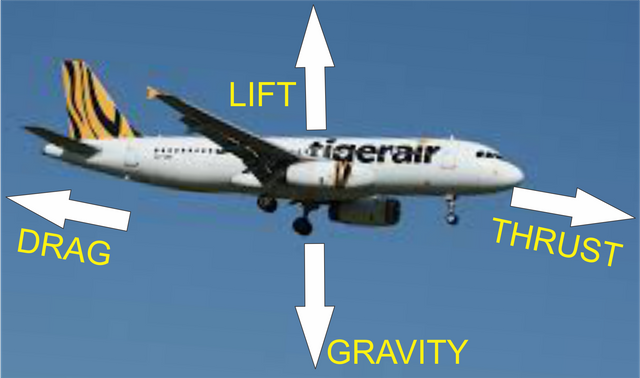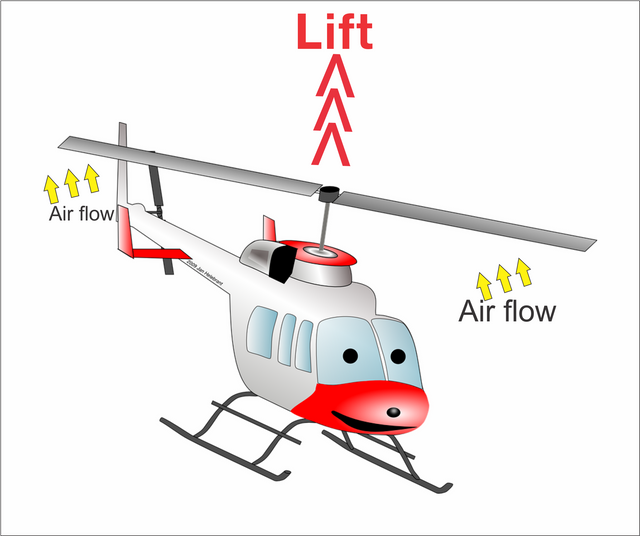Aviation: The Science Behind Flight - How Man Has Conquered the Air
Air travel has been a human dream for centuries. Stories were told of the magic flying carpets of Baghdad. Leonardo Da Vinci sketched a plausible helicopter and bird-like flying machine. The Greek legends even tell of people using wax and feather like wings to escape across the sea from an island prison. Man's quest to fly suspended in the air like birds was embarked upon by many according to myths and legends, but actual flight continued to elude man until the 18th century with the advent of lighter than air aircraft-balloons.
LIGHTER THAN AIR - AIRCRAFT
Anything lighter than air will float in air just like anything that is lighter than water will float on water.A balloon filled with lighter-than-air gas will create a lifting force that will overcome the total weight of the balloon and the passenger compartment below it. Question is, how do you find a gas that is lighter than air?
BALLOONS
Balloons are lighter-than-air aircraft consisting of fabric constructed to the shape of a balloons and held to an object(a basket in most cases) for conveying things beneath. Unheated air is denser than heated air which means that hot air will rise above cold or unheated air and is therefore lighter. The Chinese first used heated air for flight. They inflated hollow origami and paper toys such as dragons and birds, sending them aloft.
It wasn't until the 18th century before this idea was used for flight. Two brothers from France discovered that when they inflated paper balloons with hot air produced by straw or candle flames, they rose into the air. On seeing this development, they resolved to use silk balloons holding cages. In these cages, they sent animals into the air. Few years later, two Frenchmen flew a little less than 30 minutes over Paris in a balloon. They were the first humans to fly.
Later on, hydrogen gas would be discovered and proven to be lighter than air, leading to the abandoning of hot air balloons. Hydrogen filled balloons and airships would convey men around the world. But even hydrogen would be discovered to be highly combustible after several explosions of balloons and airships while in flight, making hydrogen to be replaced by helium which is not combustible and nearly as light as hydrogen. Today, hot air balloons are still used, but for short pleasure trips rather than as a mode of transportation, with some countries celebrating balloon festivals: festivals where people converge at large parks and on the countryside to fly in balloons.
METAL FLYING IN AIR? HEAVIER-THAN-AIR AIRCRAFT
Some of the earliest pioneers of heavier-than-air flight tried to fly by imitating the way birds fly. There were several ideas, including that of an English monk who proposed that man should create flapping wings like those of birds to be able to fly. Even the popular artist-Da Vinci drew up plans for an ornithopter also known as a bird machine. It was supposed to make a man fly by the flapping of the wings manually by hand. It was never practicable,unfortunately. Later on during the 19th century,people proceeded to fly with gliders,shaped like bird wings after discovering that birds like the eagle could remain aloft,soaring for long periods of time without having to flap its wings. There were several short successful flights with man made gliders made until the 20th century.
THE WRIGHT BROTHERS
The wright brothers Orville and Wilbur Wright in 1903 designed and created a craft powered by a light weight gasoline engine. 'The flyer' as they called it was a two winged plane. its wings were held together by wire frames and were made of fabric. two propellers that turned in opposite directions were attached to the shaft at the back of the plane and pushed it along. 8 days to christmas, the brothers flew their plane on a beach in North Carolina. The plane flew for a distance of 37 metres, remaining aloft for 12 seconds before returning to the ground. it was crowned the first sustained flight of a heavier than air aircraft.
HOW A PLANE FLIES
How do these giant metal birds lift into the air? for every complicated problem, there is a solution that is simple and direct if well understood. So it is with flight. Lift on a plane is simple physics, but yet the principle is misunderstood by many.
))
original image at: pexels
The first key to understanding plane flight is the fact that the shape of the wing has little to do with lift, that is why planes can fly upside down. Imagine you are holding an origami plane; the wings are flat and thin all through unlike that of an actual plane(jets aside), but it still glides through the air. The second fact is that a real wing during flight produces a force straight up(lift) by accelerating air downwards.
))
credit:@casweeney
As stated above, the shape of the wing contributes little lift though it is important for efficiency at cruise speeds and stall characteristics. Looking at birds, the angle of their wings against air flow creates a resistance that has the net effect of moving the bird and its wings upwards. This is in obedience to Newton's third law of motion: To every force, there is an equal and opposite reaction. Therefore when air is pushed downwards, the air forces the plane to react in an opposite direction-up. Many aircrafts have their wings mounted at a slightly upturned angle which ensures that air is continually pushed down by the wing. This is called the 'Angle of attack'-extremely important for lift and aircraft control.
If there is no thrust, the physics of lift is quite useless. The development of jet engines allow enormous weight and speed increase. These engines deliver tens of thousands of pounds of thrust but consume fuel unappreciably. Their generation of thrust pushes the plane forward at high speeds causing the air above the wings to move faster than air below them, so the slower moving air below exerts more pressure than the faster moving air above. This is the idea of Bernoulli's principle which states that an increase in the speed of a fluid causes a decrease in the pressure exerted by the fluid.
Without the understanding of physics, the world of aviation would hardly exist as man would have to depend on luck and his instincts to fly.
Due to the success of the wright brothers' flyer, many individual resolved to create more planes that would last longer in the air and fly higher. The first all metal body plane was successfully flown in 1912. The first and second world war sped up the development of airplanes including special 'bomber' crafts by countries like the U.S.A and Germany. The need to provide air support during the war was a prerequisite for victory and this was one of the first world war and the beginning of the second aviation was also commercialized. There were planes conveying people over short distances like from New York to Chicago even before the first airports were constructed.
ROCKETS: VERTICAL THRUST
Not everything that flies is a metal bird or shaped like one though. As the first planes were gradually gaining grounds in the area of transportation, questions were asked on how man could get to the moon. As a question which baffled astronomers for millenia on end. Men asked themselves, because it was discovered that normal planes could not carry men out of the troposphere. Luckily, the answer laid in Sir Isaac Newton's third law of motion which also applies to propeller in aeroplanes: To every action there is an equal and opposite reaction. It was theorized that if a mixture of highly combustible fuels was ignited with oxygen and released at high velocity through the rear end of a vertically suspended mass, the action will result in an opposite reaction: lifting the body up. But this would only be possible if the force is strong enough to counter the force of the gravity. Through this principle, rockets and satellites such as sputnik were launched into space by the middle of and towards the end of the 20th century. Today, space rockets still work on that same principle.
HELICOPTERS: No More Runways
A helicopter is a rotor-craft whose lift and thrust are supplied by rotors. These rotors rotate at great speeds providing enough force for vertical takeoff. Just like space rockets, helicopters use Newton's third law of motion to take off. To every action,there is an equal an opposite reaction. The speed of the rotor is key to overcoming the weight of the chopper and creating lift. If it is fast enough, it causes air to accelerate downwards(called downwash). As it pushes the air downwards,the reaction is that the helicopter is forced to move upwards.
))
original image at: pixabay
This also enables them hover stationary in the air like an owl. Due to their easy maneuver ability, they are ideal for rescue missions and for use in congested areas where airplanes cant be used. Helicopters are also used by military to drop into areas via ropes or ladders. From the first helicopters invented during the beginning of the second world war to drones and double rotor helicopters of today. The helicopter proves that fast transport by air can't only be achieved via planes
AVIATION TODAY
Today in the 21st century, there are countless flying metal birds cruising the air space across states, countries and continents. Advanced rocket engines propel rockets to space at higher speeds than ever. Right from the year when the first rocket lifted to about two years ago boosters also known as propellant tanks that propel the rocket fell back unto the earth at articular altitudes(to reduce the weight of the rocket) and got destroyed by the fall. But just two or so years ago, I watched on BBC news as boosters were successfully landed for the first time via parachutes. There was a lot of jubilation by NASA staff as this marked a way of mitigating the high cost of sending a rocket to space. Rocket engines also propel military jets at speeds more than five times the speed of sound travelling in air. Harriers or Jump-jets are military jets that do not need runways but lift vertically upwards.
Aircraft bombs underwent total transformation from normal vertically dropped bombs to computer programmed heat seeking missiles, just over a century. There are military choppers of different shapes, some with a pair of rotor blades, others with single rotor blades, both moving at high speeds. Hang gliders are a demonstrable product of the labor of men before us to fly via wings made of fabric.
Planes have been crafted to suit different purposes. There are sea planes that take off from and lands on water, used for sight seeing and rescue operations. Cargo planes are the tanker, ships of the air, used for transport and delivery of goods such as cars, electronics and heavy equipment that other planes cannot carry. Gliders(not hang gliders) are light and do not use engines but depend on air movement and air power. They are used for pleasure and fun, but can only carry one or two passengers at a time. Planes have undergone total transformation from the rigid and slow 'flyer' of the wright brothers to the more aerodynamic and extremely fast concordes of today(while still retaining the basic structure of two wings, a tail, a body and a propeller). From lasting 12 seconds in the air to days on end. The wright brothers were indeed right to think that man would someday fly.
There are still other crafts of man's thinking ability and his skillful engineering that move in the air e.g jetpacks and parachutes. To think that only a few centuries ago, several people never thought it possible for man to fly(and the few that did only imagined it or reproduced it in painting). It is exciting and fulfilling to know that at last, even space itself rests beneath the feet of man. Planes are still undergoing several advances in different areas, as engineers look for more efficient ways to reduce drag and the influence of gravity on aerodynamic machines.
MAN HAS FINALLY CONQUERED THE SEA, LAND AND AIR.
References:
- Air in Motion - How Things Fly
- Airplanes - EXPLAINTHATSTUFF
- How Does an Aircraft Fly - KLM
- How Helicopters Works - howstuffworks
If you write STEM (Science, Technology, Engineering, and Mathematics) related posts, consider joining #steemSTEM on steemit chat or discord here. If you are from Nigeria, you may want to include the #stemng tag in your post. You can visit this blog by @stemng for more details. You can also check this blog post by @steemstem here and this guidelines here for help on how to be a member of @steemstem.


Being A SteemStem Member
One or more of your photos is breaking some form of copyright, whether it be that the photos require proper attribution or are licensed in such a way that they are not free to use. For more information, check out this post here on steemstem copyright standards.
Sincerely,
@kryzsec
Corrections made @kryzsec, Thanks for showing me the way.
I wish I have enough Steem Power to make an incredible upvote on this post.
I have this great passion of aviation and Technology-related articles and even though bandwidth does stop me from placing feedback and upvoting, I do read your posts and I must confess they're always full of desired info.
Thanks for giving us these. Keep it up sir
Your comment alone is most highly appreciated. Your words sends a motivating message to me. Even if I don't get upvotes, comments like this will make me write more. Thank you @teekingtv.